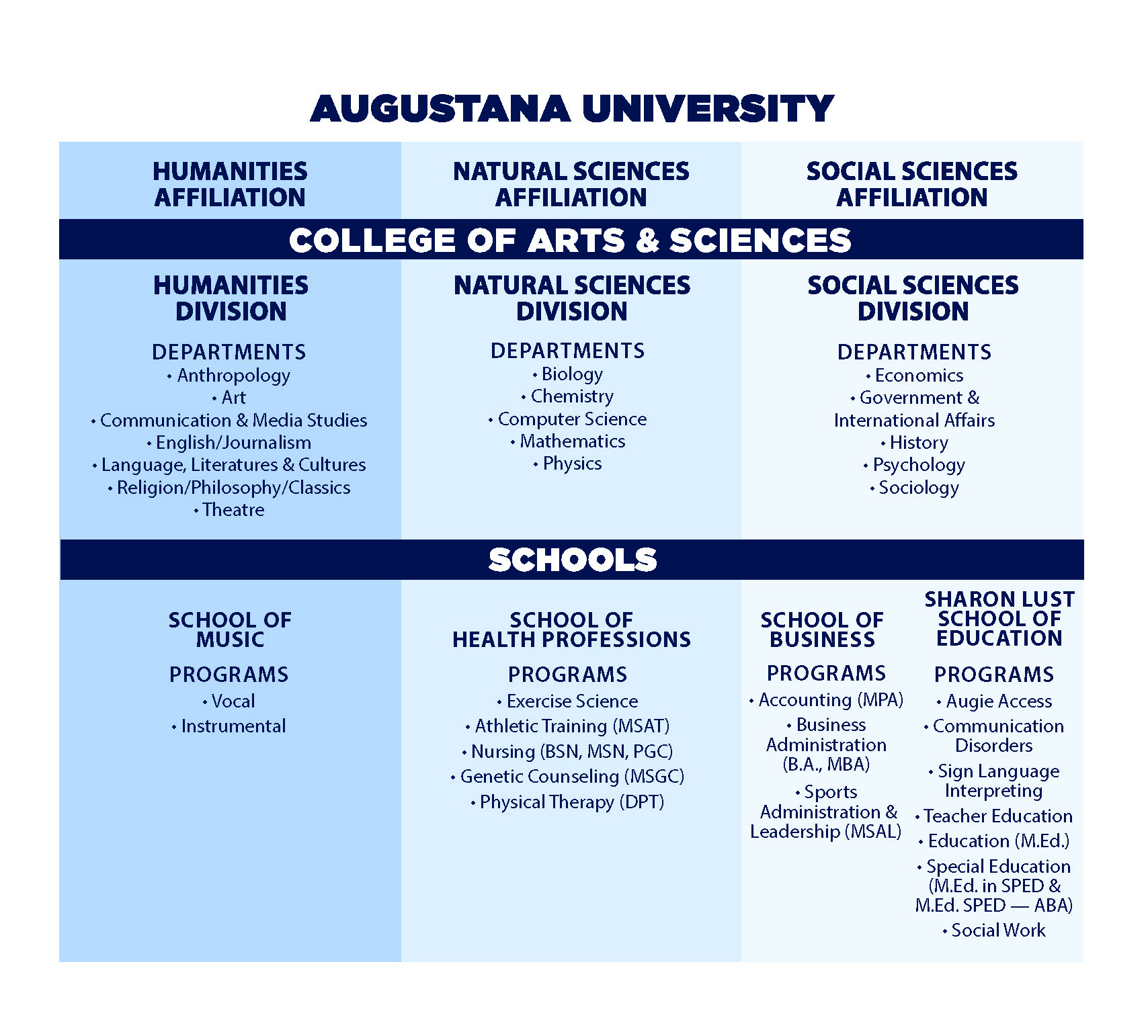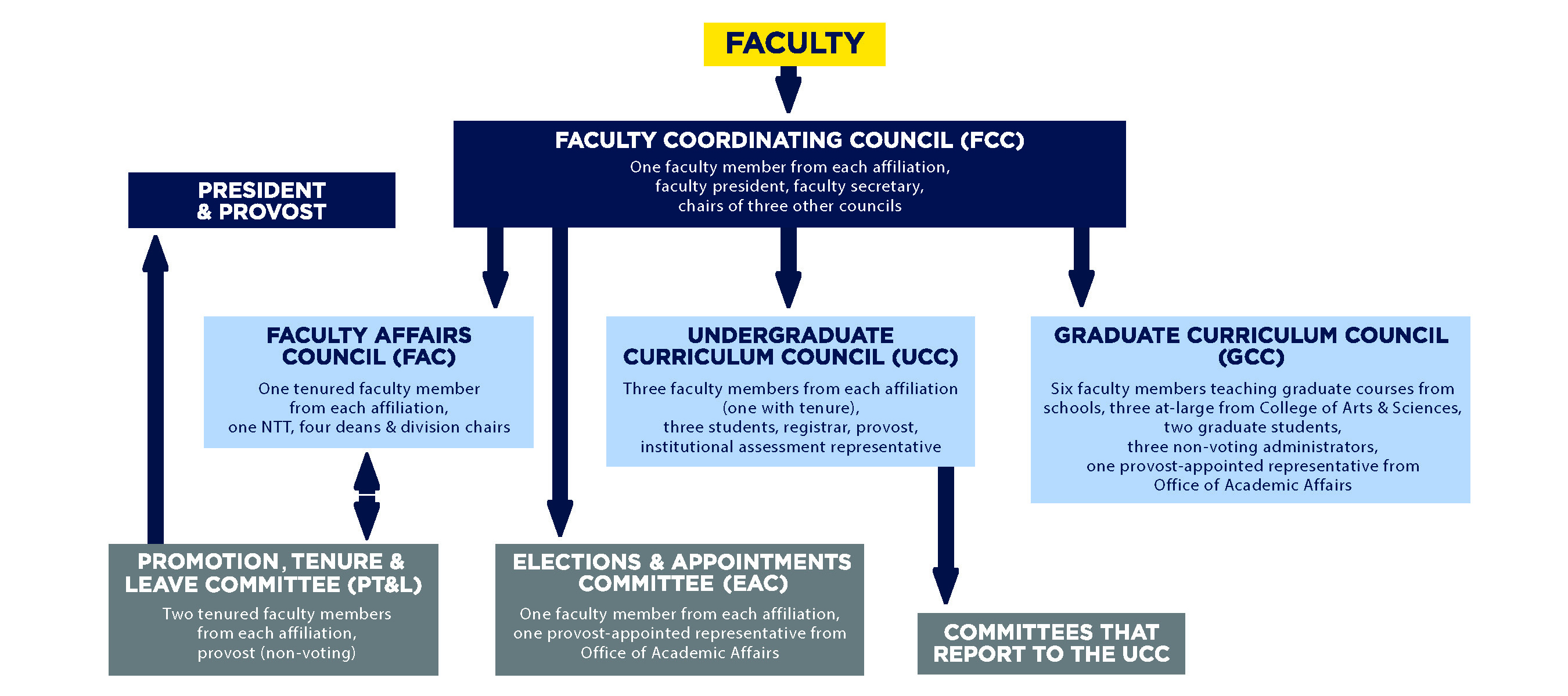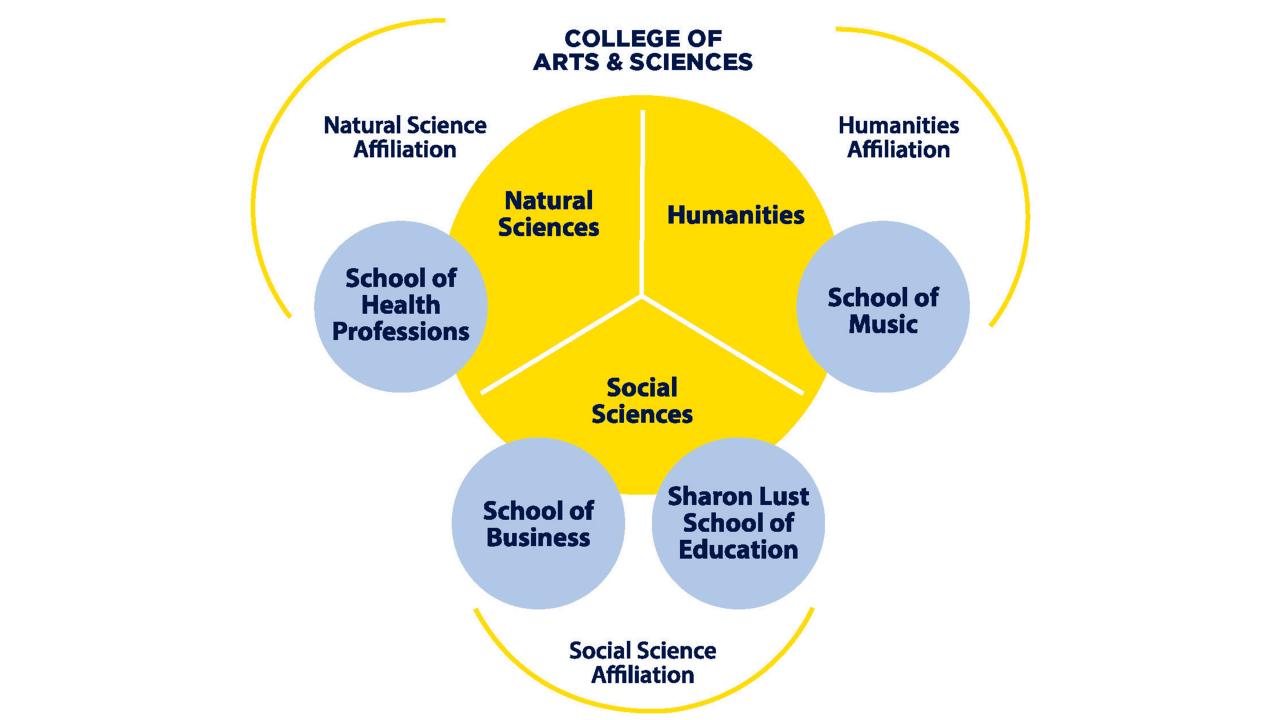In 1938, Franklin D. Roosevelt was president. The U.S. was gearing up to fight in World War II, and Superman was making his first comic book appearance.
This same year, Augustana faculty organized into the humanities, natural sciences and social sciences divisions. For the most part, the governance system stayed this way for the next 80+ years — until now.
Over the course of the last 18 months to two years, members of a Governance Task Force engaged their colleagues and other faculty — “inviting all questions, concerns and possibilities” — to update and develop a new model at AU, fully operational beginning Fall 2022.

“We wanted to knit together existing departments, divisions and programs with cross institutional structures and functions that support transformational experiences — 2-, 3- and 4-year experiences,” said Executive Vice President & Provost Dr. Colin Irvine, who joined the university in 2018.
Irvine said the university didn’t want to fix what wasn’t broken. That’s why the divisions were built into the new model, along with the division chairs who rotate and serve as the liaisons between the provost and faculty. What’s new are three affiliations: a humanities, natural sciences and social sciences affiliation, which include the three divisions as part of the College of Arts & Sciences, as well as four schools: the Sharon Lust School of Education, School of Business, School of Health Professions and School of Music each have a dean, which is a more permanent position than the division chair. Departments are housed in a division and programs with a school; each department still has a rotating chair and each program has a director, which is a permanent, non-rotating position.
“As far as I’m aware, we’re the only school in the country that has both division chairs and deans because we’re very intentional about bringing those two kinds of roles together,” Irvine said.
“(We wanted to) eliminate and/or prevent barriers for vocational discernment and faculty innovation. We don’t want our students to ever think, for instance, that they are exclusively in the School of Music or the School of Education. Instead, we want to make it easy and encouraging for them to pick up majors, drop majors, change their minds and add programs as their experiences enlighten them to do so.”

The way in which faculty work behind the scenes has also changed. In addition to meetings with full faculty, affiliation, College of Arts & Sciences and school, ex officio administrators and elected faculty meet as part of councils and committees, some of which have been restructured.
As part of the new structure, a Faculty Coordinating Council (FCC) will help three councils develop their agendas: the Faculty Affairs Council (FAC), which has the Promotion, Tenure & Leave (PT&L) Committee below it, as well as the Undergraduate Curriculum (UCC) and Graduate Curriculum Councils (GCC).
“That represents a change,” said Faculty President and Professor of Biology Dr. Paul Egland. “We used to just have a Curriculum Council, which was a lot of work and they always felt like they had more than they could do, so now we split this out and let the people who have expertise in graduate (programs) elect their own people and run their affairs and same thing goes for undergrad.”
There are then several committees that report to the UCC, as well as an Elections & Appointments Committee (EAC) that runs the elections for all of these offices and appoints people to these committees.
“We wanted to empower councils and committees that gather and evaluate and synthesize information through programs and proposals,” said Irvine. “Alongside that, we’ve also created time for divergent kinds of discussions among the full faculty. Too often the full faculty has gathered and we have business work to do that’s important, but we don’t have enough time to discuss big issues and big goals around higher education, around what matters institutionally.”
“The faculty developed this, voted on it and approved it,” said Egland. “This is a system that was developed by us. This was our doing and we’re also going to be responsible for fixing it if it’s not right.”
For more information on the new academic model, visit augie.edu/academics.
